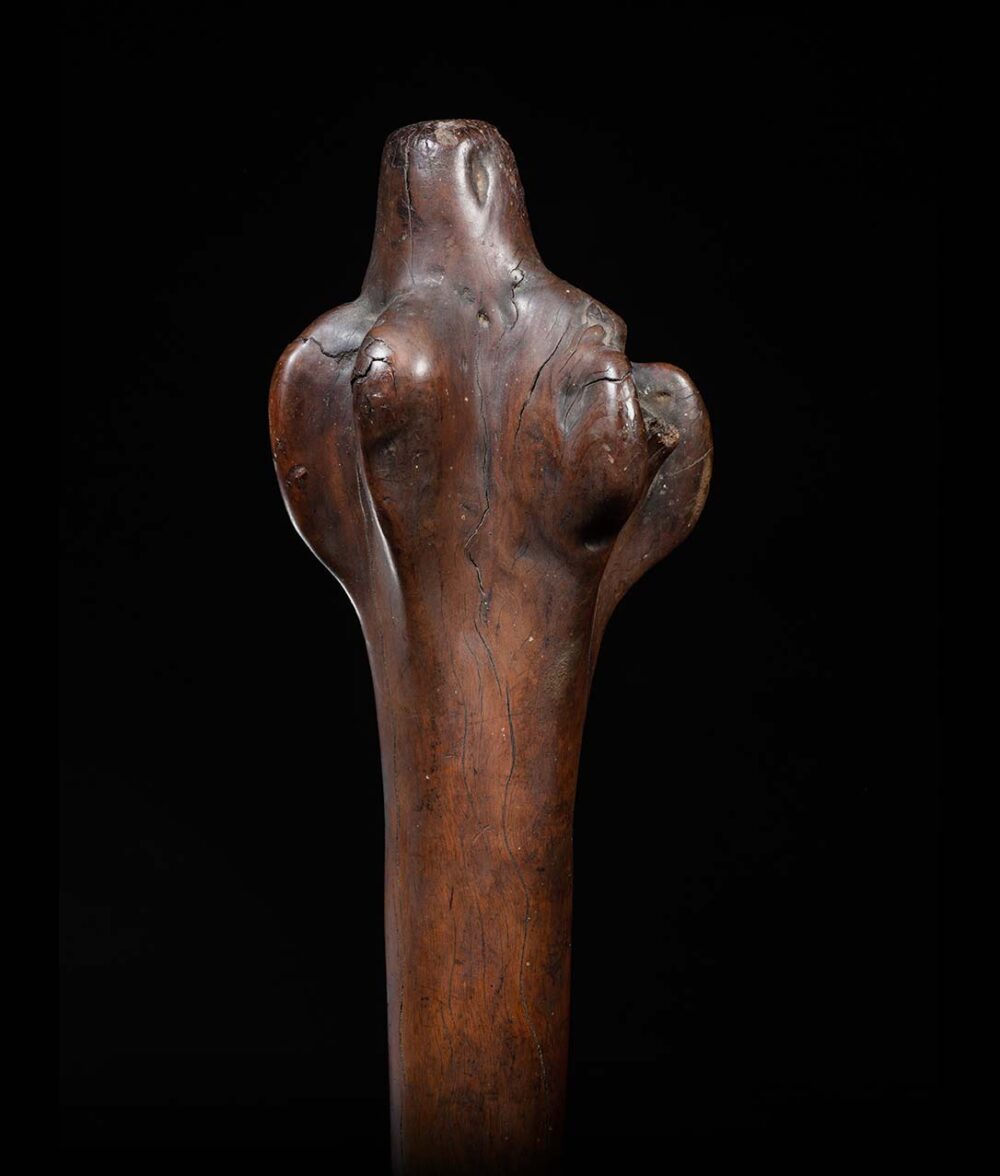Rootstock Club
Fiji
19th century
Provenance: Grace Goldberg collection, Harrison, NY, acquired in 1970 from Bobbi Nochimson- Entwistle. By descent to family member
Rootstock clubs, also known as Totokia, were traditional weapons used in Fiji for both ceremonial and warfare purposes. They were typically made from the root of a hardwood tree, which was chosen for its density and durability. The rootstock was shaped and carved into a club with a heavy head and a thinner handle section. The choice of a tree root for the construction of the club was based on practical considerations. Hardwood roots were readily available and provided a dense, heavy material that was suitable for use as a weapon. Additionally, the twisted and gnarled shape of the root allowed for interesting and unique designs to be carved into the club. The markings on the handle section of the club were a significant aspect of its cultural and aesthetic significance. These markings were typically featured intricate geometric patterns or stylized figures. In Fijian culture, the designs on the club were believed to have symbolic and protective value. They were thought to imbue the club with spiritual power and to offer protection to the user in battle. Additionally, the designs served an aesthetic purpose, as they were meant to be visually striking and impressive. The designs on Rootstock clubs were often unique to the individual maker, and they were sometimes used as a means of identifying the owner of the club.
Rootstock Club
Fiji
19th century
Provenance: Grace Goldberg collection, Harrison, NY, acquired in 1970 from Bobbi Nochimson- Entwistle. By descent to family member
Rootstock clubs, also known as Totokia, were traditional weapons used in Fiji for both ceremonial and warfare purposes. They were typically made from the root of a hardwood tree, which was chosen for its density and durability. The rootstock was shaped and carved into a club with a heavy head and a thinner handle section. The choice of a tree root for the construction of the club was based on practical considerations. Hardwood roots were readily available and provided a dense, heavy material that was suitable for use as a weapon. Additionally, the twisted and gnarled shape of the root allowed for interesting and unique designs to be carved into the club. The markings on the handle section of the club were a significant aspect of its cultural and aesthetic significance. These markings were typically featured intricate geometric patterns or stylized figures. In Fijian culture, the designs on the club were believed to have symbolic and protective value. They were thought to imbue the club with spiritual power and to offer protection to the user in battle. Additionally, the designs served an aesthetic purpose, as they were meant to be visually striking and impressive. The designs on Rootstock clubs were often unique to the individual maker, and they were sometimes used as a means of identifying the owner of the club.








